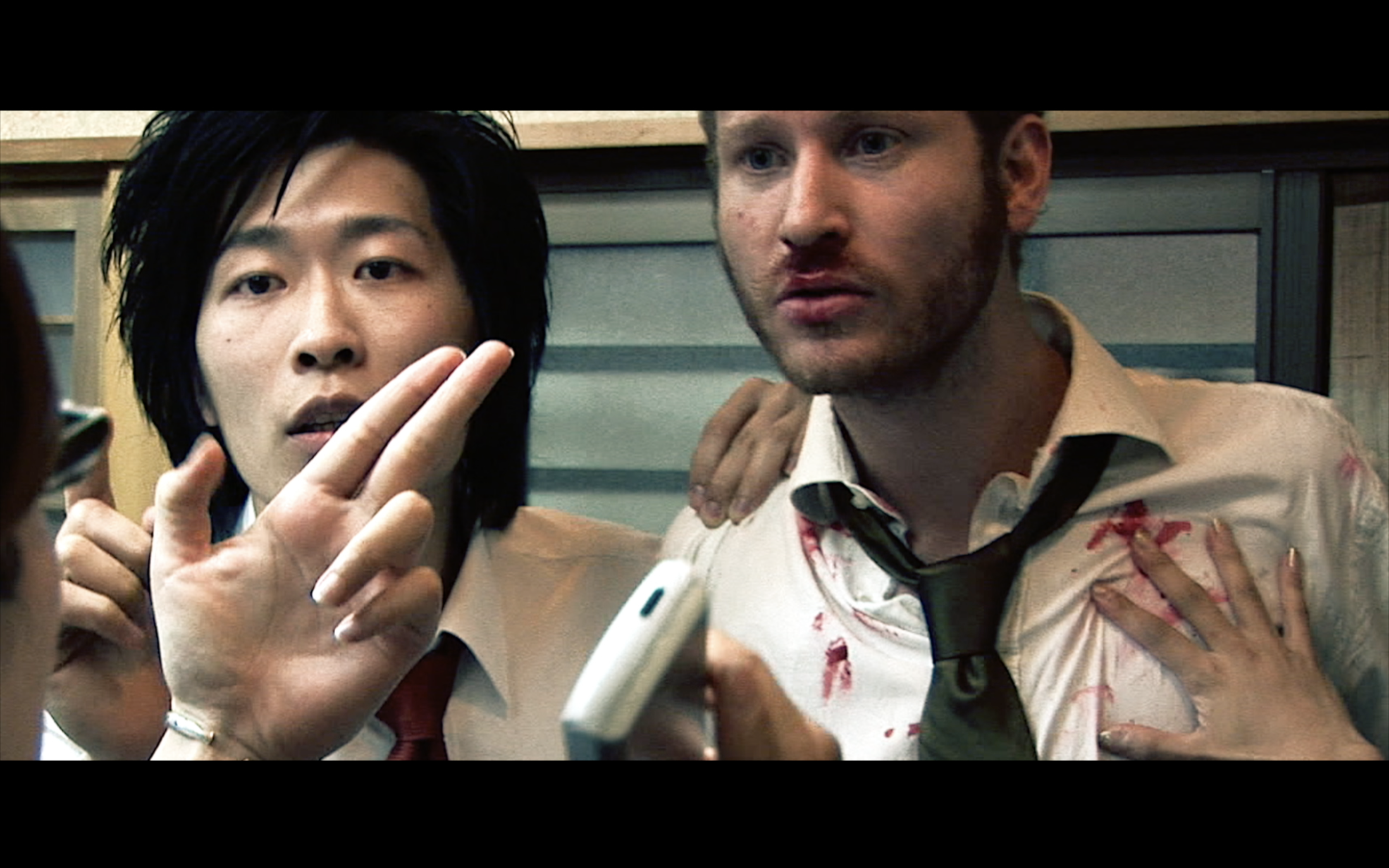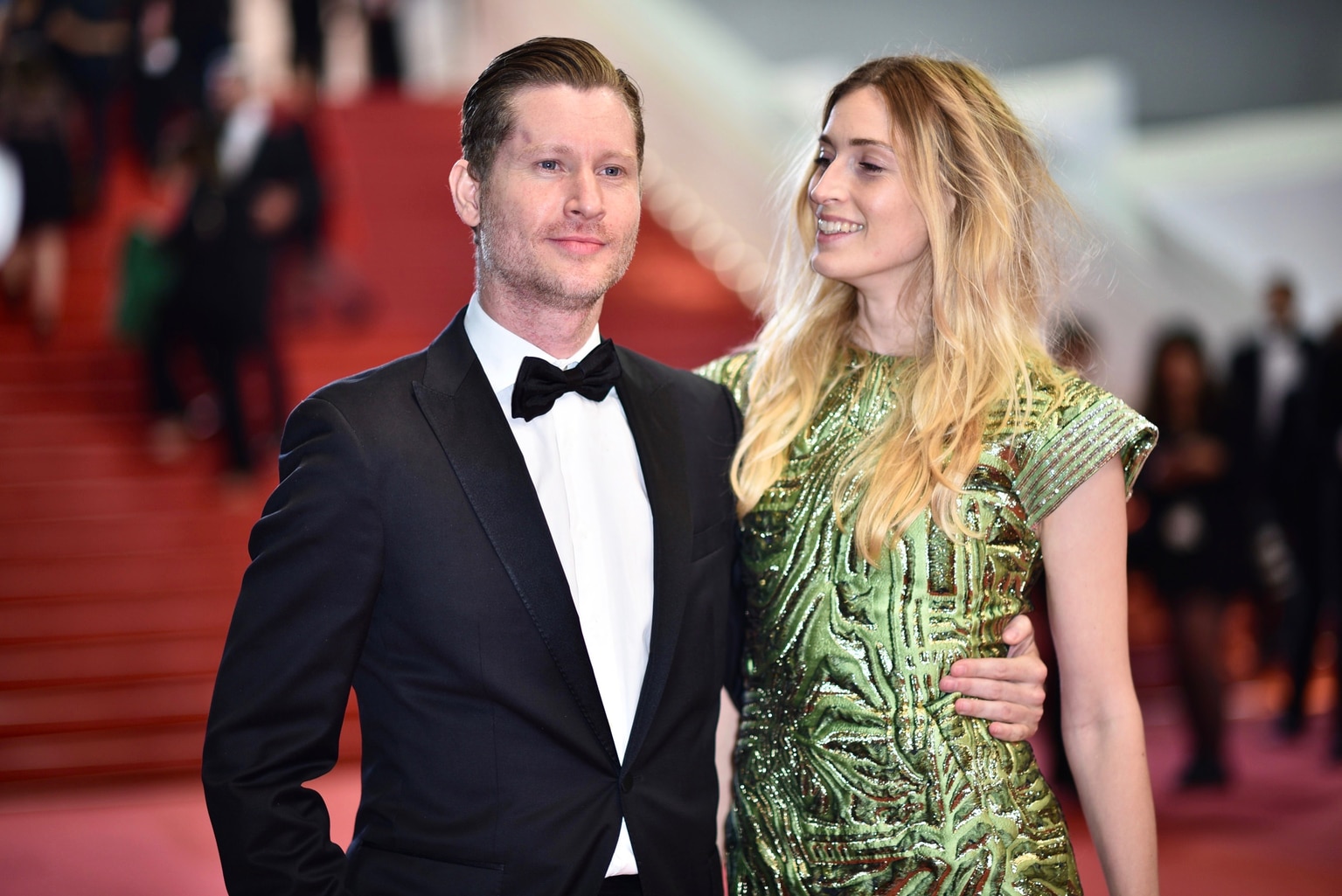Traditionally, deaf characters in Hollywood films have been portrayed as tragic figures who struggle to communicate and subsequently rely on others to get by. Looking to buck that trend is deaf director and actor Emilio Insolera with his first feature-length movie Sign Gene. Set predominantly in Japan (as well as America and Italy), it is a superhero flick that revolves around the character of Tom Clerc, a deaf agent with a genetic mutation who’s sent to Osaka with his colleague to investigate a series of murders committed by deaf mutants.
“I wanted to show deaf people in a different light and not as the stereotypical victim”
“I wanted to show deaf people in a different light and not as the stereotypical victim,” Insolera tells TW. “At first, I was considering making a documentary but changed my mind because I’ve always been passionate about film and believe movies are a more powerful tool when it comes to conveying a message. The perception people have of groups of individuals they’ve never interacted with, let’s say Aborigines for example, often comes from what’s seen at the cinema. The same is true for how deaf people are viewed. Too many times I’ve seen us depicted as these timid, dependent characters. It’s not realistic.”
According to Insolera, the problem stems from a lack of deaf representation in Hollywood, both in terms of acting and production. Visual performers, while now more prominent in the entertainment industry, are still regularly being overlooked with many recent examples of hearing actors taking on the roles of deaf characters in movies including Kate Siegel in Hush and Jacob Tremblay in Shut In.
Last year Todd Haynes and Laura Rosenthal were on the one hand praised for casting 14-year-old deaf actress Millicent Simmonds as the deaf-mute character Rose in Wonderstruck, yet also criticized for choosing hearing actors Julianne Moore to play the adult Rose, and Oakes Fegley for the part of Ben, a young boy who loses his hearing after being struck by lightning. Haynes, who’d made three previous films with Moore, defended the decision to cast the Oscar winner, stating that she was needed to provide a “draw,” while also pointing out that six other deaf actors appeared in the film.
“Historically, deaf parts have tended to go to hearing actors,” says Insolera. “That’s the way things have been in Hollywood since the 40s when Jane Wyman played Belinda MacDonald [a character unable to communicate who was loosely based on a poverty-stricken deaf woman named Lydia Dingwell] in the film Johnny Belinda. Even if a performance is impressive, as a deaf person watching you notice many things that don’t ring true such as facial expressions, word choice, accent, and tone. It can make for frustrating viewing.”
In 1986, Marlee Matlin became the first (and still only) deaf performer to win an Academy Award after playing the lead role of Sarah Norman in Randa Haines’ romantic comedy Children of a Lesser God. At the time, it was seen as a potential watershed moment for deaf people in the entertainment industry, however, more than 30 years on and opportunities are still lacking for visual actors. It’s a cycle that Insolera is determined to break.
“Another issue,” he says, “is that deaf characters on TV and in movies are being seen through the eyes of hearing people as they’re the ones writing the screenplays and directing everything. With Sign Gene, not only are the main actors deaf or CODAs [children of deaf adults], but so are the director and writer.”

Photo by Leslie Kee, Wardrobe by Yohji Yamamoto, Hair by Kenji Sato, Makeup by Tatsuya Suzuki
Born in Argentina in 1979, Insolera was raised in Italy before moving to America to study linguistics and film at Gallaudet University, the world’s leading institution for deaf students. He went on to do a master’s degree in Mass Communication at the Sapienza University of Rome, then worked for MTV, Time Out New York and Elle, as well as co-producing the first Italian sign language dictionary in DVD format.
His dream since childhood, though, was to work in the film industry. Being told it’d be almost impossible due to his condition strengthened Insolera’s resolve and in 2009 the Italian left the States to fly to Japan where he began writing Sign Gene. Although into movies such as Akira and Black Rain (partly shot in Osaka), the 39-year-old deaf activist admits he knew little about the country before heading here, but that was part of its appeal.
He’d originally intended to visit Japan for a month but ended up staying six years. It was a similar story with the movie. Initially proposed as a short film, following a groundswell of support and many people offering their services, Insolera decided to turn it into something longer shot across three continents and in six languages: American sign language, Japanese sign language, Italian sign language as well as spoken English, Japanese and Italian. With a meager budget of $25,000, it wasn’t always easy and there was a time when the director almost gave up on the project. Fortunately, he met Tim Burton in Tokyo, who encouraged him to keep going, and Insolera eventually managed to finish it.

A scene from the movie “Sign Gene”
The story begins with several mysterious murders in Japan. The deceased, including an American senator’s daughter, appear to have been killed by invisible bullets. The head of the Q.I.A. (QuinPar Intelligence Agency), a Pentagon-affiliated organization composed of selected agents with sign gene mutation, sends Tom Clerc (Insolera) and his partner Ken Wong (Danny Gong) to find out what’s happening. Carriers of the mutation possess arcane powers such as the ability to metamorphose their hands into authentic weapons and close doors without touching them, all by using sign language.
“I’ve often felt visual communicators have superhero-like qualities,” opines Insolera. “There are things we’re capable of doing that hearing people aren’t. A basic example is the fact that I can look out the window and, without using technology, communicate with a deaf person who’s a fair distance away. Our other senses are also very strong. We’ll notice small things that others miss. So, rather than focusing on what we’re unable to do, as is often the case, I thought it’d be a good idea to make a film celebrating the positive aspects of being deaf while also acknowledging people who’ve made significant contributions to our lives.”
There are several references to prominent figures in deaf history throughout the 68-minute action flick. The main character Tom and his girlfriend Kate Massieu (Carola Insolera), for instance, are descendants of the pioneering deaf educators Laurent Clerc and Jean Massieu. Other names mentioned in the movie include William Stokoe, whose work led to a widespread recognition of American Sign Language as a genuine language with its own syntax, morphology, and structure; Graham Alexander Bell, the father of oralism in deaf education whose mother and wife were both deaf; and James Denison, the only deaf representative among 168 delegates at the Second International Congress on Deaf Education that took place in 1880.
The Congress, also known as the Milan Conference, declared oralism superior to manualism and subsequently banned the use of sign language at schools. Visual communicators were forced underground for more than 80 years, though the debate as to which method should be used to educate and interact with the deaf continued. Insolera says it “became like a battle between the deaf and hearing communities,” and this is one of the underlying themes of his film. The 1.8.8.0. group, an organization intent on exterminating Sign Gene mutants, represents those who tried to stamp out sign language as a form of communication, while the Q.I.A. are seen as its defenders. The agency’s star logo symbolizes the five phonological parameters of signs: handshape, movement, location, orientation, and non-manual signals.

Emilio and Carola Insolera at Cannes. Photo by Johnny Dalla Libera
“Of course, I hope people watching Sign Gene enjoy it as a piece of entertainment, but it’d also be great if they came away wanting to learn more about our culture and history,” says Insolera. “My future goals are to produce more quality films and to invest in young deaf filmmakers, while also continuing to promote visual signs as a form of communication around the globe. If I could have one superpower myself, it would be the power make everyone understand and be able to express visual signs. That would be wonderful!”
Watch Sign Gene on November 15, 2018 at TOHO Cinemas Roppongi Hills.
Emilio Insolera will be present for a panel discussion.
More info at www.signgene.com and www.emilioinsolera.com
Top image: Photo by Leslie Kee, Wardrobe by Yohji Yamamoto, Hair by Kenji Sato, Makeup by Tatsuya Suzuki









